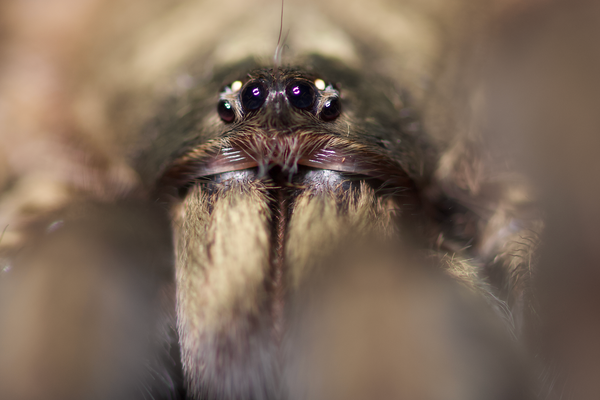Why Are Snails and Slugs So Slow?
These mollusks evolved to mosey along at a particularly ponderous pace—the reasons why may surprise you.
This story was originally published on The Conversation as part of its Curious Kids series, in response to a young reader’s question. It appears here under a Creative Commons license.
Wander through your backyard or walk along a stream and it’s likely you’ll see a snail: small, squishy animals with shells on their backs. Snails are found in water, whether in salty oceans, rivers, or lakes. They’re also on land: in forests, grasslands, and even your garden.
As you explore your yard or woods, you can also encounter slugs, which are slow-moving animals related to snails. They look like them too, except that slugs lack shells. Not only can you find slugs crossing sidewalks or on plants at the park—some are in our oceans.
All told, an estimated 240,000 species of snails and slugs live all over the world. But no matter what continent they’re on, or what ocean they’re in, there’s one thing they all have in common: They move slowly.
Here’s an example of just how slow they are: The World Snail Racing Championships, held in the United Kingdom, pits the quickest snails against one another in a “foot” race. The fastest snail on record sped through the course at a blazing 0.006 miles per hour.
Or to look at it another way, if you were that slow, it would take about three minutes to get a bite of food from your plate to your mouth.
Why is it that snails and slugs are in no hurry? As researchers who specialize in the study of plants and animals, we’ve learned the answer is more complicated than you might think.

Snails and slugs are members of a large group of related animals known as mollusks, which also includes clams, oysters, squids, and octopuses. Within mollusks, there’s a smaller set of related animals called gastropods; this includes snails and slugs.
Because they live in such diverse places, different gastropods have evolved to consume almost every type of food. Some species are herbivores—they eat living plants. Some are detritivores—they feed on dead or decomposing plants. Others are carnivores or scavengers—they eat other animals.
The lack of speed of snails and slugs can be attributed to at least three factors: how they move, what they eat, and what eats them.
First, while some animals fly, jump, or slither, snails and slugs move using what biologists call the “ventral foot.” But the word “foot” here can be confusing. A snail or slug foot is nothing like a human foot. Instead, it’s a band of muscle that runs along the underside of their body and is covered in sticky mucus. When contracted, this muscle ripples, sending tiny waves from the animal’s tail to its head. These waves compress the mucus on the bottom of the foot into a slippery liquid, allowing the snail or slug to glide over the ground or climb plants.
It’s a unique way to move, and it forces snails and slugs to go slowly because their speed is limited by the number of foot contractions and the amount of mucus they can make. And snails and slugs don’t need to rush to find their food, anyway.
Many animals, particularly predators, must move fast to catch a meal; a cheetah needs to outrun a gazelle, for example. But most slugs and snails eat plants, decaying matter, or marine animals, like sponges, which are anchored in place. None move around much, so dinner’s not going anywhere—no rush.

Nor do snails and slugs need to be fast to avoid predators. They’ve evolved other ways to evade mice, birds, shrews, and other enemies. Typically, snails withdraw into their shells to hide until the predator passes.
Land slugs hide in plain sight. Most are shades of gray, tan, or brown and blend in well with their surroundings. Predators simply don’t notice them. They also have an additional layer of protection. Land slugs are covered with a sticky mucus, similar to the mucus that lubricates their movement. But this version is so gooey that it can gum up the mouths of predators and make it hard to chew. Not to mention that most predators probably wouldn’t find the slime very tasty.
In contrast, sea slugs are often easy to see because they are colorful. But these bright colors advertise to predators that they should stay away, because the slugs are protected with nasty-tasting poisons.
Snails and slugs, small as they are, are big contributors to the health of their ecosystems. By feeding on seeds and young plants, they can control which plants grow in an area. By eating decaying matter, they help recycle nutrients that growing plants can use. And despite their best efforts, snails and slugs do often become food for other animals.
So the next time you see a snail or slug hanging from a plant, dawdling in your yard or gliding across a concrete sidewalk, stop and observe. Remember its remarkable biology, the unique way it moves and looks, and the many ways it benefits the environment.
And then, let them be. These small animals help keep our world running.
John Tooker is a professor of entomology and extension specialist at Penn State. Daniel Bliss and Jared Adam are graduate students in entomology at Penn State.
Correction: This story previously stated that the speed of the World Snail Racing Championship’s fastest snail on record was 0.06 mph. The correct speed is 0.006 mph.



























Follow us on Twitter to get the latest on the world's hidden wonders.
Like us on Facebook to get the latest on the world's hidden wonders.
Follow us on Twitter Like us on Facebook